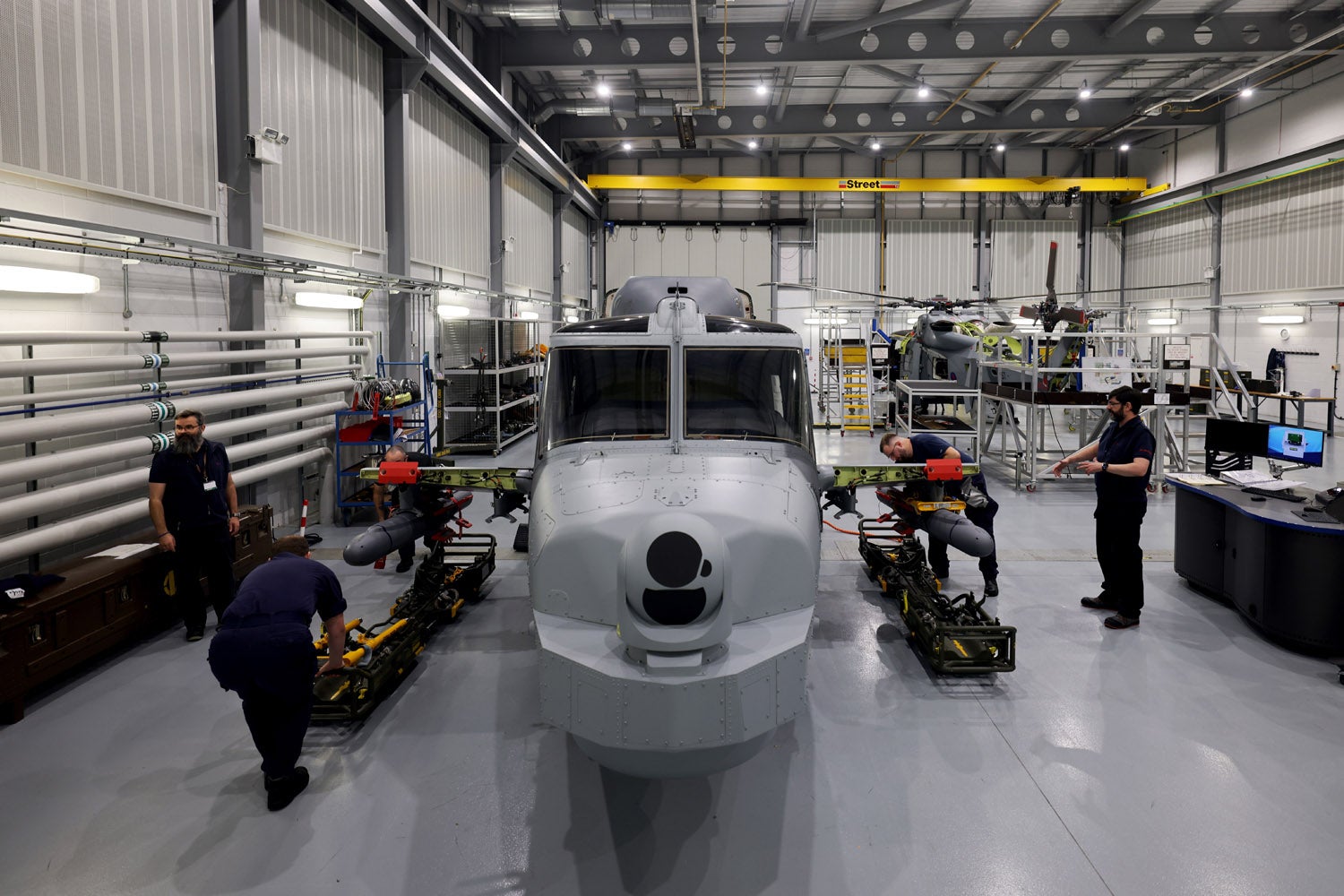
The UK Royal Navy (RN) has installed a new trainer, called the Weapons Loading System Trainer, at RNAS Yeovilton in Somerset, UK.
The multi-million-pound trainer is a replica of the Wildcat helicopter that will ensure the loading/attaching of the weapon systems onto the aircraft.
The new trainer allows instructors to simulate errors and faults.
Training involves a nine-day course including theory, written exam and practical training, focusing on defensive aids suite.
It will help the aircrew to install different weapon systems onto the Wildcat maritime surveillance and attack helicopters.
Weapons include Sting Ray torpedoes and two variants of future anti-surface guided weapons (FASGW), Martlet and Sea Venom.
How well do you really know your competitors?
Access the most comprehensive Company Profiles on the market, powered by GlobalData. Save hours of research. Gain competitive edge.

Thank you!
Your download email will arrive shortly
Not ready to buy yet? Download a free sample
We are confident about the unique quality of our Company Profiles. However, we want you to make the most beneficial decision for your business, so we offer a free sample that you can download by submitting the below form
By GlobalDataIn comparison to the Fleet Air Arm’s previous air-to-surface weapon, Sea Skua, the new missiles are easy to install.
Wildcat Training Centre senior naval instructor lieutenant commander Joe Keane said: “It’s a great asset, and it has greatly enhanced our training. When Flights move on to work on a live aircraft, they have seen it before. It fills them with confidence.”
In a separate development, the RN Gibraltar Squadron, comprising Cutlass-class fast patrol boats (FPB) that are patrolling and safeguarding British Gibraltar territorial waters.
The two Cutlass-class vessels, HMS Dagger and Cutlass, are larger, faster and more heavily armed than the two boats they have replaced, HMS Sabre and Scimitar.
The Navy is now planning to deploy the two vessels beyond the western gateway to the Mediterranean waters.
HMS Cutlass commanding officer lieutenant commander Ollie Barrett said: “It’s incredibly important for smaller vessels such as ours to conduct defence engagement, flying the flag for the RN in ports which the larger surface ships cannot get into.
“So, there are plans later this year for us to push out, beyond the three-mile limit which we normally patrol, carry out port visits, build up a rapport with other allied navies operating in the area.”



